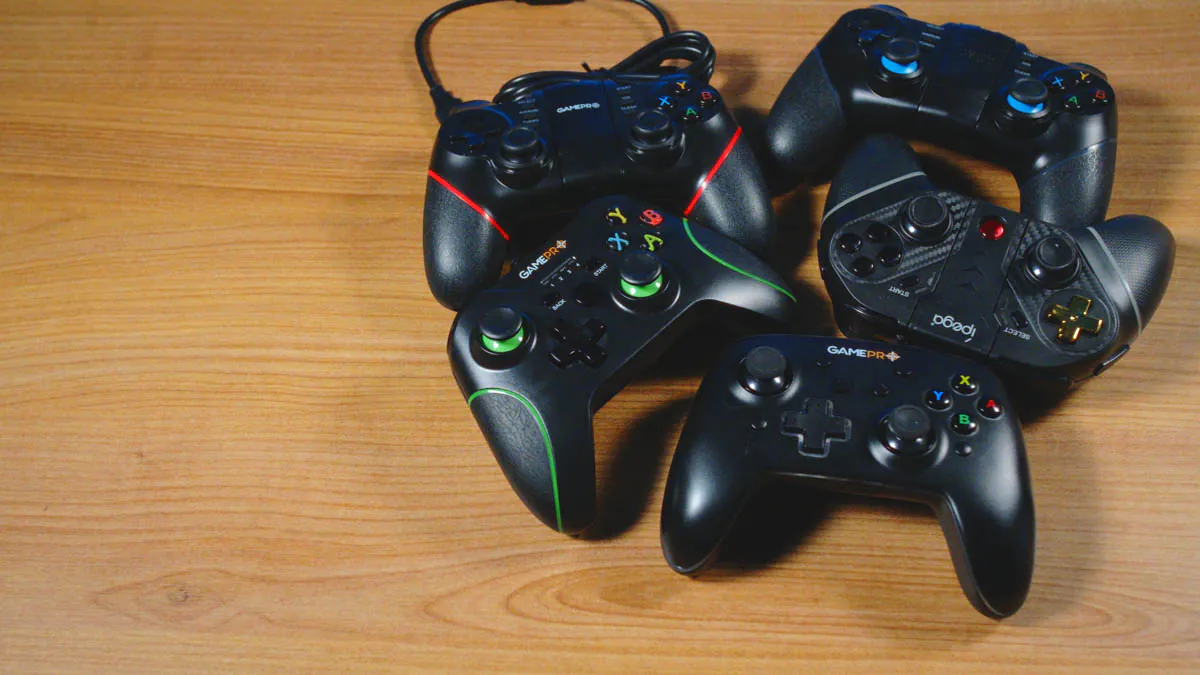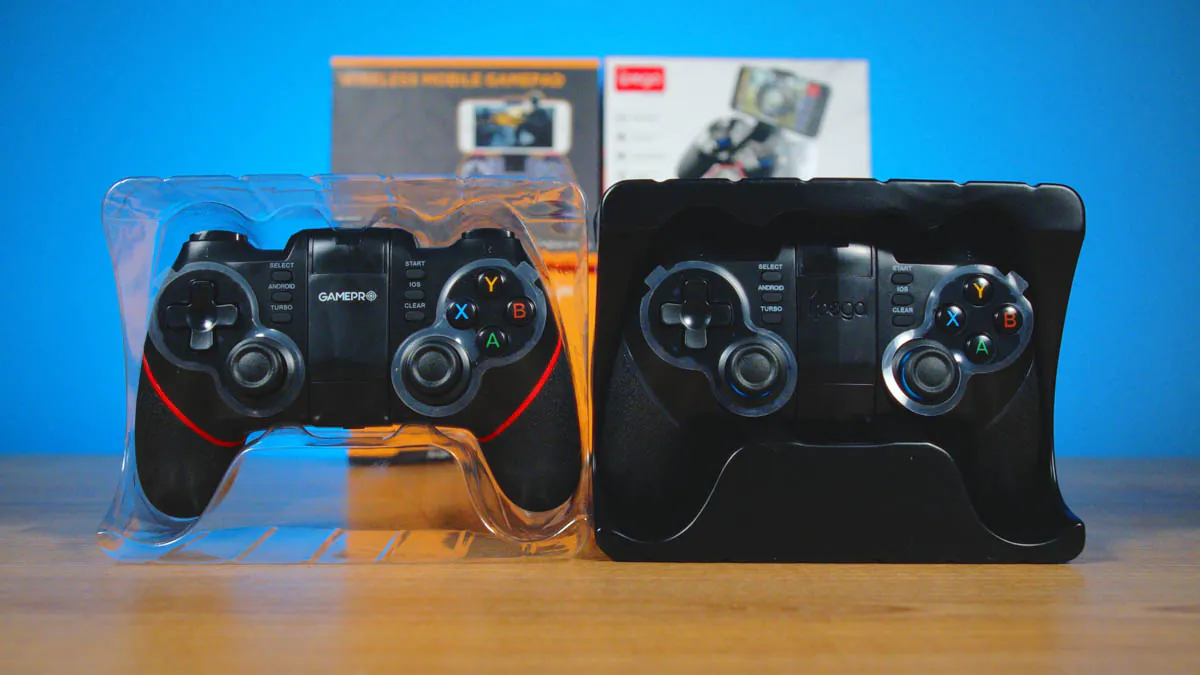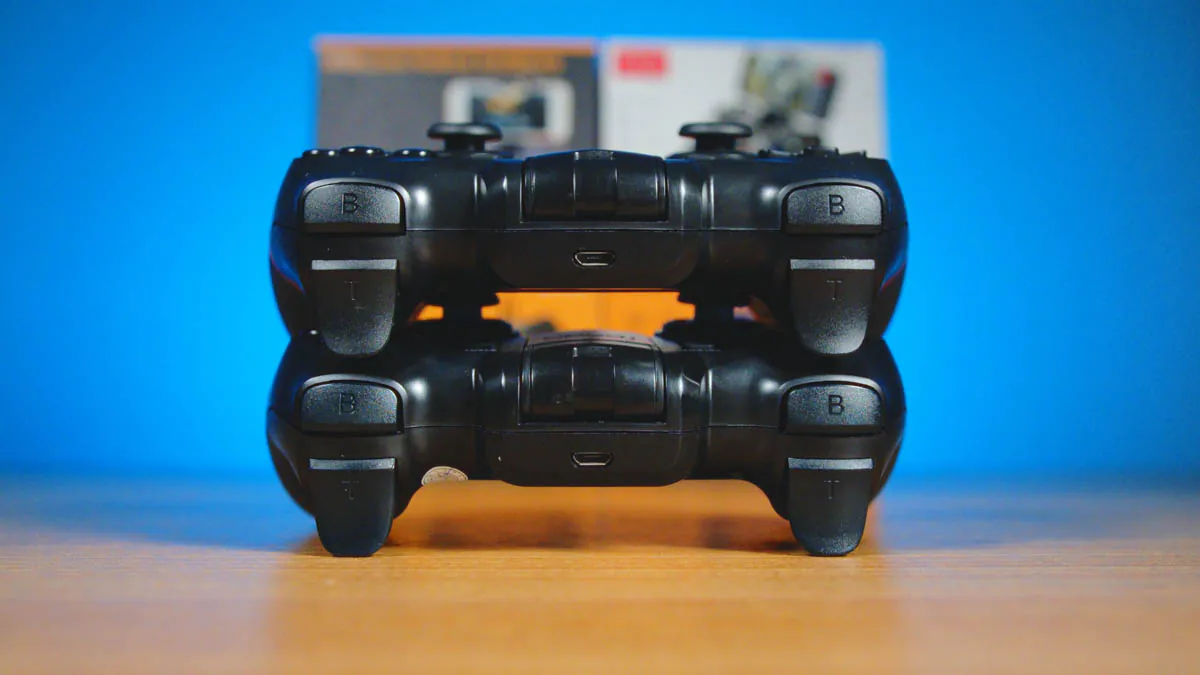© ROOT-NATION.com - Use of content is permitted with a backlink.
It went like this. For testing laptops, I put together a small HDMI kit. A switch, a doubler, a Miracast adapter and a few other interesting things. And then I realized that thanks to the Uperfect Lapdock X Pro mobile display, I could turn my smartphone into… basically an Android console for gaming! The only thing I still needed was a gamepad.

GamePro MG1200, GamePro MG850, GamePro MG450, and iPega PG-9218 and iPega PG-9156 gamepads came to me for testing. They’re all relatively inexpensive, ranging from $15 to $35. All but one are wireless – and all support Android and iOS. However, I won’t start with them, but with the set-up.
Video about GamePro MG1200/MG850/MG450 and iPega PG-9218/PG-9156

Setup

Why do I start with the setup? Because I’m not picking a smartphone for a PC, or an Xbox, or just an Android smartphone. I’m picking a gamepad specifically for a smartphone as a console. The smartphone will lie separate, either connected to a Cablexpret hub with HDMI, or just on a charger, connected via Wi-Fi to a monitor. The gamepad will be separate, it will not hold the smartphone in any way.

The Uperfect Lapdock X Pro currently serves as a second monitor for Windows. But it can easily be connected to an HDMI switch with either a hub or a Miracast adapter connected to it.

The latter must be dual band, i.e. support Wi-Fi 4 and Wi-Fi 5. If it only supports Wi-Fi 4, it’s garbage and money for nothing. I know from my own experience, I have one just like it.

I mean, when my PC is busy testing hardware or heavy rendering – I press the HDMI switch, press two buttons on my smartphone, turn on the gamepad, and literally 15 seconds later I can play games. On Android, there’s Minecraft, Terraria, Titan Quest, there’s a bunch of Final Fantasy, there’s Vampire Survivors, Don’t Starve, Star Wars KOTOR, Baldur’s Gate, there’s three parts of GTA, Civilization IV, DOOM/DOOM II, and more. Not all games work perfectly with gamepads, not all are optimized for weak smartphones – but all are present.
Criteria
Now for the gamepads. I will choose them according to several parameters, which will NOT include the availability of proprietary software, the ability to turn off the backlight, vibration support, a smartphone mount or even autonomy. The gamepad will be blocked by the table while I play, I don’t like vibration, I won’t be playing for a long time, and I don’t want to get into proprietary software.

My priorities are quality, versatility, thoughtfulness and ergonomics. It’s important that the gamepad feels good in my hand, that all the buttons are of high quality and easy to press, that nothing gets lost, and that I can even take it with me if necessary.
GamePro MG450B
I’ll start, oddly enough, with the wired model. GamePro MG450B is the only one in today’s selection without Bluetooth or 2.4 GHz channel. Its cost is also minimal, the button layout is Xbox-like, there are no additional buttons. There is soft-touch on the body, but you can feel the budget performance, which is expected for $12.

Why did I even take the wired model for a test? Because I was very afraid of the input lag problem. Well, I mean, even with a wired model, there is a USB delay. But it is a little more than one tenth of a millisecond by standard. Not one millisecond, but one tenth of a millisecond.

In Bluetooth 5.0, latency can be up to 40 ms, at best. On the 2.4GHz channel, it’s half that, 20ms. But that’s in the ideal case. In practice, Bluetooth can be affected by other Bluetooth channels – from a smartphone, from wireless headsets, even from older Wi-Fi 4 networks. The 2.4 GHz channel is not affected.

Does that mean wired gamepads are the best? In terms of data transfer, yes. But only in that sense. They’re not as convenient, they’re almost always cheap, and there’s no such thing as versatility. In theory, you can connect GamePro MG450B via cable to Commodore 64, but whether it will work is the question. Let’s move on.
Ipega PG-9156/GamePro MG850
Among the five gamepad models, I have three GamePro and two Ipega. However, I’m going to combine these particular models into one paragraph, and I think you’ll understand why very quickly. To explain this effect, you should know what an OEM, or Original Equipment Manufacturer, is.

It is essentially a factory that produces 99% similar goods. And the last 1% can be customized by the customer. And this is not always a bad thing. For example, FSP produces not only power supplies under its own brand, but also produces power supplies for Thermaltake, Antec, Zalman and even SilverStone. Here the situation is the same. The price, by the way, is also $27 without discounts.

These are two almost similar gamepads, with the same set of buttons, smartphone mount, 2.4 GHz adapter in the body and a minimum of additional features. The layout here is from PlayStation, the build quality is better than the wired gamepad… But the age of these models, both, obviously – so much so that for charging here is used… microUSB.

Ipega PG-9218
If I didn’t know the PG-9139 existed, I would call it the 9218 the flagship model from the manufacturer. Functionally, it’s an Ipega PG-9156 with a few steps forward in terms of quality. Here remained smartphone mounts and PlayStation layout, but turned out a much larger number of buttons, most of which – programmable separately.

On the plus side, there’s the option of working directly via cable, charging is via Type-C, and the design is generally not bad. There are even carbon fiber inserts for fans of Need For Speed, apparently.

However, there are some disadvantages. The S1/S2 buttons are well located and well made, but the lower buttons, S3/S4, are not very comfortable to press.

I also note that the box designers incorrectly showed that the 2.4 GHz adapter here seems to be hidden in the case. But no, there is nowhere to hide it, it is even in the box separately.

The cost of the gamepad is up to $35.
GamePro MG1200
This gamepad is the latest among all the presented gamepads, and this gives it certain advantages. Yes, the layout here is Xbox, there is no soft-touch and no smartphone mount. And, in general, in appearance it is, in fact, a Switch Pro controller, but without the additional soft-touch at the bottom. There are advantages, though – starting with the price, which is three times less than the Switch Pro itself – $30.

Next, there are hardly as many programmable buttons as the predecessor from Ipega, but their ergonomics are absolutely gorgeous.

So much so that I will likely install a program sooner or later to assign individual functions to them.

The buttons themselves sound and click very nicely, but what’s more interesting is how the 2.4GHz adapter issue has been resolved.

To get it out, you have to remove the top cover, which is held on magnets. The adapter itself slips out of place in a second, as it is not attached to anything, but it is not a problem. There is also a possibility that the components here can be replaced independently, as access to them is quite simplified.
Summary
Now – what I chose specifically. GamePro MG450B is out, because I have enough wires on my desk as it is. Ipega PG-9156 and GamePro MG850 have enough advantages for two, but almost all of them are useless for me, and the disadvantage in the form of microUSB for charging is very noticeable – I have everything around me exclusively with Type-C.

The choice between the Ipega PG-9218 and the GamePro MG1200 was much closer towards the GamePro, so I’ll explain that I really wanted the flagship, model PG-9139, in this comparison. That’s where you can change the position of the control modules, including a separate module LOWER the case. But there’s no 2.4GHz support there at all.

So yes, I have my pick of the GamePro MG1200. The layout for shooters is here, and there are some great and exclusive ones on Android. There’s the convenience of all the buttons, Type-C, and a fairly quick attachment. Well, don’t forget to write in the comments what gamepad YOU would choose for yourself, and under which platforms. Most of the gamepads support at least Android and PC, don’t forget.
Read also:
- HUAWEI FreeBuds SE 2 Wireless Headphones Review
- Xiaomi 13T Pro Smartphone Review
- To out-innovate your rivals. How Motorola keeps us entertained

